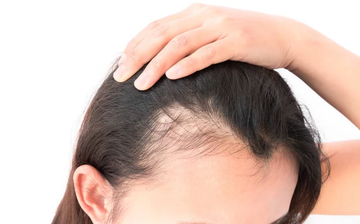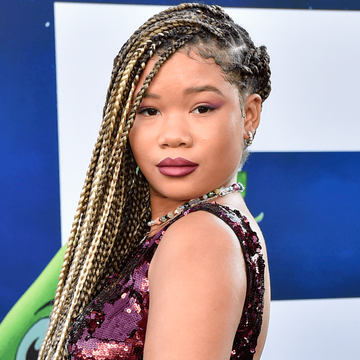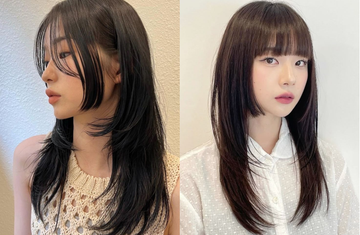Thinning hair often feels delicate and difficult to manage, but the right approach can make all the difference. By focusing on gentle cleansing, strengthening treatments, and smart styling techniques, you can create a routine that supports healthier, more resilient hair. This article provides practical tips and product recommendations to help you care for thin, fragile hair while boosting volume and confidence.
Characteristics of thinning hair
Thinning hair is often more fragile and prone to breakage, requiring gentle handling and care. You might notice a decrease in overall volume, a more visible scalp, or strands that feel weaker or more brittle. While these signs can feel frustrating, they are also an opportunity to reassess your hair care habits and focus on strengthening and protecting your strands.
-
Less volume: Hair may feel flat or limp, making it harder to hold styles.
-
Increased shedding: You might see more hair on your brush or in the shower.
-
Fragility: Thin, fragile hair is more prone to snapping when combing or styling.
Understanding thinning hair’s causes and characteristics
Thinning hair can happen gradually, and understanding why it occurs is the first step to managing it effectively. From genetic factors to daily habits, several causes contribute to hair thinning, each affecting the health and appearance of your strands in unique ways.
Common causes of thinning hair
1. Genetics
Hair thinning caused by genetics, also known as androgenetic alopecia, is one of the most common types of hair loss. This hereditary condition impacts both men and women, with symptoms often appearing gradually. In men, it may present as a receding hairline or bald spots, while in women, it’s more likely to appear as diffuse thinning across the scalp. Genetics determine how sensitive your hair follicles are to hormonal changes, which can lead to reduced hair density over time.
2. Hormonal changes
Hormonal imbalances from life stages like pregnancy, menopause, or thyroid dysfunction can significantly disrupt the natural hair growth cycle. For instance, pregnancy-related hair loss often occurs postpartum when hormonal shifts cause a temporary increase in shedding. Similarly, menopause reduces estrogen levels, which play a protective role in hair growth. These changes often result in hair becoming finer, weaker, and prone to shedding, particularly at the crown and temples.
3. Stress
Both physical and emotional stress can push hair follicles into the resting phase of the growth cycle, resulting in noticeable shedding a few months later. Known as telogen effluvium, this condition is often temporary but can feel alarming. Stress-related thinning may be triggered by illness, surgery, or emotionally taxing life events. While the shedding typically subsides once the stress is managed, it’s important to support your hair with a nourishing care routine during recovery.
4. Aging
As we age, hair undergoes natural changes that can result in thinning. The growth phase of the hair cycle shortens, hair follicles shrink, and production slows. These factors lead to finer, weaker strands and a more noticeable scalp. Although this process is natural, maintaining a healthy lifestyle and using targeted treatments can slow down its progression and improve the appearance of thinning hair.
5. Nutritional deficiencies
Your hair needs a steady supply of nutrients like iron, biotin, and zinc to grow strong and healthy. When your diet lacks these essentials, hair growth slows, and strands can become brittle and prone to breakage. For example, low iron levels, common in women, can result in hair that feels thinner and weaker. Incorporating a nutrient-rich diet or supplements can help restore balance and promote healthier hair.
6. Lifestyle factors
Habits like frequent heat styling, chemical treatments, or wearing tight hairstyles can weaken hair over time, leading to thinning. Excessive use of flat irons or curling wands strips hair of moisture and weakens its structure, while tight ponytails or braids pull on the roots, causing tension and breakage. Protecting your hair by minimizing heat exposure and opting for looser styles can make a significant difference in preserving its strength and volume.
The ultimate hair care tips for thinning hair
Building an effective hair care routine for thinning hair starts with a gentle yet targeted approach that nourishes fragile strands while encouraging healthy growth. From cleansing to styling, every step plays a role in strengthening and protecting your hair.
1. Cleansing gently but effectively
Thinning hair thrives when the scalp is clean and free of buildup, but harsh shampoos can strip natural oils, making your hair even more vulnerable to damage. A mild, volumizing shampoo is your best bet for keeping hair fresh and light while nourishing the scalp.
Tips for cleansing
– Wash two to three times a week to maintain scalp health without over-drying.
– Focus on the scalp, using your fingertips to gently massage and stimulate blood flow. Avoid aggressively scrubbing the strands to minimize breakage.
– Rinse thoroughly with lukewarm water to prevent residue and dryness.
2. Conditioning for strength and volume
Conditioning is essential for hydrating and fortifying thinning hair, but heavy formulas can weigh it down. Opt for lightweight conditioners designed to add volume and improve manageability.
Tips for conditioning
– Concentrate the product on the mid-lengths and ends rather than the scalp to avoid greasiness.
– Use a wide-tooth comb in the shower to distribute conditioner evenly while detangling gently.
– Rinse thoroughly to ensure no product residue remains, which can make thin hair look flat.
3. Strengthening treatments to rebuild hair
Thinning hair often needs extra reinforcement to prevent breakage and improve density. Weekly treatments, such as protein masks or keratin-infused products, help rebuild the hair’s structure, making it more resilient.
Tips for treatments
– Alternate between moisturizing and strengthening treatments to maintain a healthy balance.
– Focus on the ends, where damage tends to accumulate, while avoiding overuse to prevent brittleness.
4. Styling with care to add volume
The right styling techniques can create the appearance of fuller hair, but the wrong ones can worsen thinning. Lightweight mousses, root-lifting sprays, and blow-drying with a round brush are excellent ways to add volume without damage.
Tips for styling
– Apply a volumizing mousse or spray to damp hair, focusing on the roots.
– Blow-dry on a low heat setting, lifting hair at the crown with a round brush to enhance body.
– Avoid excessive use of heavy gels or oils, which can make hair appear greasy and flat.
Styling practices to avoid using on thinning hair
Some styling techniques can damage thinning hair, leading to further breakage or stress on already fragile strands. Avoid these practices to keep your hair healthy and strong:
1. Tight hairstyles
Ponytails, buns, and braids that pull on the roots can lead to traction alopecia, a condition where hair thins along the hairline or other stressed areas. Opt for loose, gentle styles instead.
2. Excessive heat styling
Regular use of curling irons, flat irons, and high heat blow-dryers can weaken the hair shaft and cause split ends. Always use a heat protectant and lower temperature settings when styling.
3. Over-brushing
Brushing too often or with the wrong tools can lead to breakage. Stick to wide-tooth combs or brushes with soft, flexible bristles designed for delicate hair.
4. Overuse of dry shampoo
While convenient, dry shampoo can build up on the scalp, clogging hair follicles and weighing hair down. Use sparingly and cleanse your scalp regularly.
When to see a dermatologist for thinning hair
While a consistent hair care routine can significantly improve the health and appearance of thinning hair, there are times when professional help is necessary. If you’ve noticed persistent hair loss or other concerning symptoms, consulting a dermatologist can help identify underlying issues and create a targeted treatment plan.
Signs it’s time to consult a dermatologist
1. Sudden or rapid hair loss
If your hair has started falling out in clumps or you’re noticing dramatic thinning over a short period, it’s essential to see a dermatologist. Sudden hair loss can be linked to underlying medical conditions like alopecia areata, thyroid disorders, or autoimmune diseases that require professional intervention.
2. Visible scalp patches or bald spots
Hair loss that results in circular or patchy bald spots could indicate conditions such as alopecia areata or fungal infections like ringworm. These issues often need prescription medications to treat effectively.
3. Scalp discomfort or irritation
If you experience itching, burning, redness, or flaking alongside thinning hair, it might be a sign of an underlying scalp condition like seborrheic dermatitis, psoriasis, or an allergic reaction to hair products. A dermatologist can help address these concerns to restore scalp health.
4. No improvement with a consistent routine
If you’ve been following a hair care routine for thinning hair but haven’t seen any progress after several months, a dermatologist can evaluate your scalp and hair to uncover hidden issues, such as hormonal imbalances or nutritional deficiencies.
5, Family history of significant hair loss
Hereditary conditions like androgenetic alopecia may require medical treatments, such as topical minoxidil or oral medications, to slow down hair loss and promote regrowth. A dermatologist can recommend the best options based on your specific needs.
What a dermatologist can do for thinning hair
– Scalp examination: A dermatologist can assess your scalp’s health, identify patterns of hair loss, and pinpoint potential causes.
– Medical treatments: They may prescribe treatments like minoxidil, finasteride, or corticosteroid injections to address specific conditions.
– Hair growth procedures: Options like platelet-rich plasma (PRP) therapy or low-level laser therapy can stimulate hair growth and improve density.
– Dietary guidance: If nutritional deficiencies are contributing to hair thinning, a dermatologist can recommend supplements or dietary changes to support overall hair health.
Seasonal care tips for thin hair
Thinning hair requires special care throughout the year, as seasonal changes can affect its health and appearance. From the dryness of winter to the humidity of summer, adjusting your routine to match the weather helps protect fragile strands and keep your hair looking its best.
Winter care to combat dryness and brittleness
Cold temperatures and indoor heating can strip moisture from your hair, leaving it dry, brittle, and prone to breakage.
– Deep conditioning
Use a moisturizing mask or deep hydrating conditioner weekly to combat dryness and strengthen your strands. Look for products with hydrating ingredients like shea butter, coconut oil, or aloe vera.
– Seal in moisture
After washing, apply a lightweight oil or serum to seal in hydration and add a protective barrier against the elements.
– Protective styles
Wear low-manipulation styles like buns, twists, or braids to minimize exposure to cold air.
– Satin-lined hats
Protect your hair from friction and breakage by choosing hats lined with satin or silk.
Spring care to prepare for seasonal changes
Spring brings unpredictable weather, which can leave your hair feeling frizzy or unbalanced.
– Clarify your scalp
Use a gentle clarifying shampoo once a month to remove buildup from heavier winter products.
– Focus on lightweight hydration
Transition to lighter conditioners and serums to avoid weighing down thin hair as temperatures rise.
– Protect from allergens
If pollen or seasonal allergies affect your scalp, keep it clean with regular washing and soothing treatments.
Summer care to fight humidity and sun damage
High humidity and sun exposure can wreak havoc on thinning hair, making it feel limp, frizzy, or brittle. Protect your strands with these summer tips.
– UV protection
Use products with UV filters to shield your scalp and hair from harmful sun rays.
– Hydration sprays
Keep your hair refreshed with a hydrating mist to combat humidity and dryness.
– Post-swim care
Rinse your hair immediately after swimming to remove chlorine or salt buildup, and apply a leave-in conditioner to restore moisture.
– Lightweight styling
Opt for airy, heat-free styles to minimize stress on fragile hair.
Fall care to strengthen and nourish
As temperatures cool, your hair may need extra strength and nourishment to prepare for the drier months ahead.
– Strengthening treatments
Incorporate protein-rich masks to rebuild your hair’s structure and prepare it for winter challenges.
– Moisturize strategically
Balance hydration and strength by alternating between moisturizing and strengthening treatments.
– Trim regularly
Remove split ends to maintain healthy strands as the season changes.
Find balance and confidence in your hair care journey
Thinning hair can feel like a challenge, but with the right care, it’s entirely possible to maintain strong, healthy, and beautiful strands. From understanding the causes of thinning hair to creating a tailored routine that prioritizes gentle cleansing, hydration, and protection, every step brings you closer to your hair goals.
Remember, consistency is key. Small changes like choosing lightweight products, incorporating strengthening treatments, and adapting to seasonal needs can make a significant difference over time. If progress feels slow, don’t hesitate to seek support from a dermatologist who can offer expert guidance and targeted solutions.





